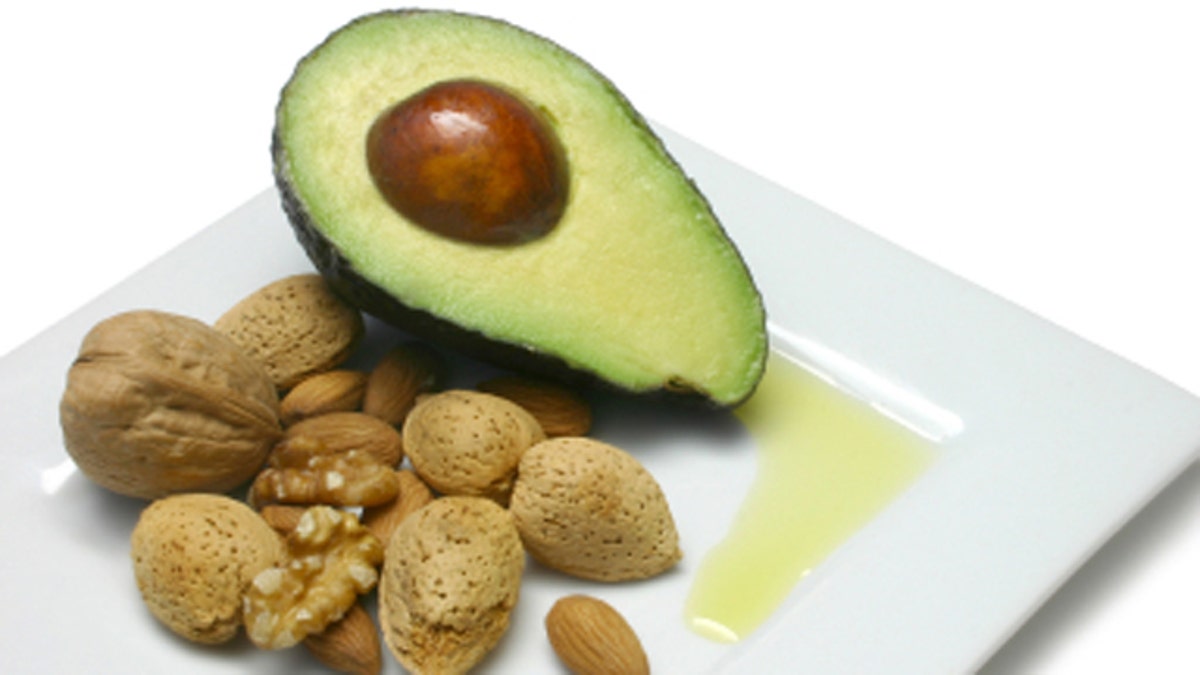
Fat isn’t all bad. In fact we need fat in our diet for energy and vital functions such as brain and cell function and the body’s absorption of nutrients. Virtually all foods, plant and animal, contain some fat, so instead of thinking we should avoid fat our aim should be to get a healthy balance of it.
A healthy diet is comprised of no more than 30 percent of calories from fat and less than 10 percent from saturated fat. For an average man consuming 2,000 calories a day, this equals no more than 60g of total fat and less than 20g of saturated fat a day. For women it’s 30 percent of calories from fat and no more than 10 percent from saturated fat as well. This number may be slightly higher or lower than the 60g of total fat depending in their calorie needs. Adolescents and children generally need a higher percentage of calories from fat because it is essential for proper growth and development. Toddlers ages 2-3 need 30 to 40 percent of their daily calories from fat, or 33-62g per day based on 1,000 to 1,400 calories. This number drops to 25-35 percent of calories from fat after age 4.
There are three types of fat: monounsaturated, polyunsaturated and saturated.
Monounsaturated fat is the healthiest and is linked to lowering the risk of heart disease and cancer. When added in moderation to a healthy diet, these fats can lower the bad cholesterol in our bodies and raise the good. They are also a great source of Vitamin E, an antioxidant which many Americans need more of. Sources of monounsaturated fats include avocado, olives, almonds, peanuts, sesame seeds, canola and olive oils.
Polyunsaturated fats are found mainly in plant foods and some sea foods, and they can provide moderate health benefits. There are two main classes of polyunsaturated fatty acids, omega-3 and omega-6, including essential fatty acids. Oily cold water fish such as herring, salmon and mackerel are a good source of omega-3, whereas omega-6 is found mostly in plant foods such as walnuts, sunflower oil and rapeseed oil, which contain antioxidant vitamins that help protect against cell damage.
Saturated fat is the least healthy and it is found mostly in animal products such as meat, butter, cream, and lard. Eating a lot of saturated fat can increase the blood cholesterol, and high cholesterol increases the risk of heart disease, including heart attack, stroke and narrowing of the arteries (atherosclerosis).
A fourth type of fat – trans fats – also known as trans fatty acids – are made by adding hydrogen to liquid oil, which turns it into a solid form. Trans fat is doubly bad because it elevates “bad” cholesterol (LDL) levels while decreasing “good” cholesterol (HDL), and this can raise your risk for coronary heart disease.
Due to growing health concerns action by the U.S. Food and Drug Administration (FDA) has led makers of processed foods such as microwave popcorn, coffee creamers, packaged cookies, canned frosting and frozen pizza, to reformulate their products without trans fats.
For delicious high fiber meal plans, recipes and tips on healthy eating, drinking and losing weight, check out my latest book, The Miracle Carb Diet: Make Calories and Fat Disappear – with Fiber!
Tanya Zuckerbrot MS, RD, is a registered dietitian in New York City and the bestselling author of The Miracle Carb Diet: Make Calories and Fat Disappear – with fiber as well as the F-Factor Diet. Follow Tanya on Facebook, Twitter and LinkedIn, and register for new weekly newsletter by visiting her website Ffactor.com.
